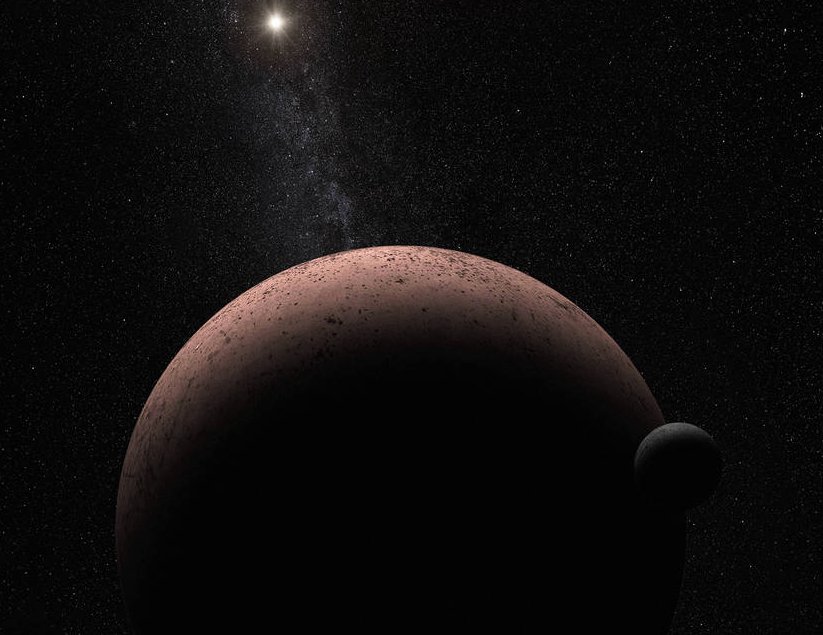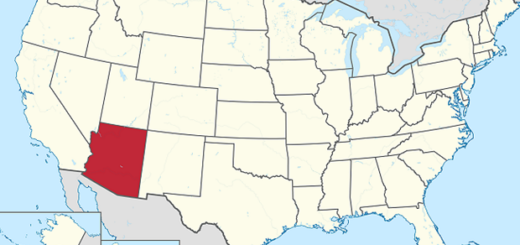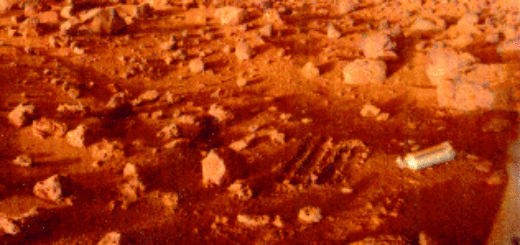Hubble Discovers Moon Orbiting The Dwarf Planet Makemake

NASA’s Hubble Space Telescope has spotted a small, dark moon orbiting Makemake, the second brightest icy dwarf planet — after Pluto — in the Kuiper Belt.
The moon, nicknamed MK 2, which was seen approximately 13,000 miles from the dwarf planet, is more than 1,300 times fainter than Makemake. MK 2 and its diameter is estimated to be 100 miles across. Makemake is 870 miles wide.
The dwarf planet, discovered in 2005, is named for a creation deity of the Rapa Nui people of Easter Island.
The Kuiper Belt is home to several dwarf planets. Some of these worlds have known satellites, but this is the first discovery of a companion object to Makemake. Makemake is one of five dwarf planets recognized by the International Astronomical Union.
The observations were made in April 2015 with Hubble’s Wide Field Camera 3. The observing team used the same Hubble technique to observe the moon as they did for finding the small satellites of Pluto in 2005, 2011, and 2012. Several previous searches around Makemake had turned up empty.
“Our preliminary estimates show that the moon’s orbit seems to be edge-on, and that means that often when you look at the system you are going to miss the moon because it gets lost in the bright glare of Makemake,” said Alex Parker of Southwest Research Institute, Boulder, Colorado, who led the image analysis for the observations.
A moon’s discovery can provide valuable information on the dwarf-planet system. By measuring the moon’s orbit, astronomers can calculate a mass for the system and gain insight into its evolution.
“Makemake is in the class of rare Pluto-like objects, so finding a companion is important,” Parker said.
“The discovery of this moon has given us an opportunity to study Makemake in far greater detail than we ever would have been able to without the companion.”
Finding this moon only increases the parallels between Pluto and Makemake. Both objects are already known to be covered in frozen methane. As was done with Pluto, further study of the satellite will easily reveal the density of Makemake, a key result that will indicate if the bulk compositions of Pluto and Makemake are also similar.
“This new discovery opens a new chapter in comparative planetology in the outer solar system,” said team leader Marc Buie of the Southwest Research Institute, Boulder, Colorado.



 Creators of mankind
Creators of mankind Description of “Tall white aliens”
Description of “Tall white aliens” Where they came from?
Where they came from? About hostile civilizations
About hostile civilizations The war for the Earth
The war for the Earth “Tall white aliens” about eternal life
“Tall white aliens” about eternal life Video: “Nordic aliens”
Video: “Nordic aliens” Aliens
Aliens Alien encounters
Alien encounters The aliens base
The aliens base UFO
UFO Technology UFO
Technology UFO Underground civilization
Underground civilization Ancient alien artifacts
Ancient alien artifacts Military and UFO
Military and UFO Mysteries and hypotheses
Mysteries and hypotheses Scientific facts
Scientific facts


















